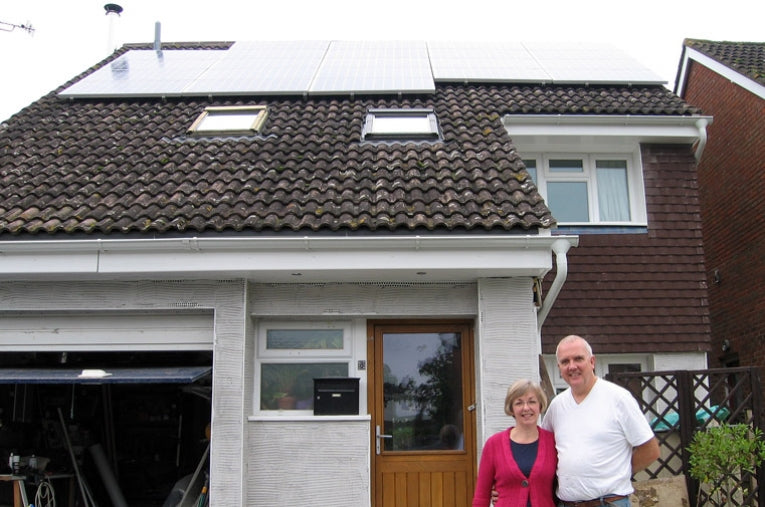Fancy going inside a SuperHome? What is a SuperHome and does it wear a cape? The answer to that is fairly clear: no it doesn't; in fact a SuperHome looks pretty much like an ordinary home, except it may have solar panels on the roof. It is inside that it is different. SuperHomes are homes that have reduced their their carbon emissions by at least 60%. They are ordinary houses that have been transformed into low-carbon dwelling places. And better still, you can go and visit them in the next few days: it is Spring Opening from March 27th - April 4th.
Britain suffers from having a lot of old housing stock. As about 14% of carbon emissions are from residential buildings, there is a lot of improvement that needs to be done to meet the UK's commitment to reduce its climate changing emissions by 80% by 2050. The SuperHomes project is a way to show people how ordinary houses can be completely transformed, which not just reduces energy costs but usually adds value to the house when it is sold. The UK government's Green Deal also promises to help people pay for green home improvements so it looks like there will be a rush to create more SuperHomes in the near future.
At present there are 94 in the UK, all over the country, and to encourage others, they hold Spring Opening, where people can come and visit them and talk to the owners about how they created their superhomes. Over 16,000 visitors attended last year and this year is expected to be 30-40% higher. To find the nearest one to you, use the SuperHome Locator .This will show you where it is, and what are its opening times.
John Doggart, of the Sustainable Energy Academy, who started the project, says that if all new homes were carbon-neutral from tomorrow, it would save just 1% of the country's carbon output by 2050. But if existing homes were retrofitted to become 60% more energy efficient it would reduce UK carbon emissions by around 15%. His own home is a Victorian era detached house which has Low E Double glazing, internal and external insulation on the walls and in the roof, and low energy lights throughout. The carbon emissions have been reduced by 70%, and yet the house looks just the same as it did when it was built over 100 years ago.
Gabby Mallett, Project Director of SuperHomes, says ''We are aiming to reach a target of 500 SuperHomes within five years.'' She explains that most SuperHomes are created on a rolling basis because of the cost, so for example one year the lights will be replaced, then the next, the insulation will be upgraded. Often the houses are so draught-proofed that Heat Recovery Units are needed to exchange stale air with fresh air to stop the houses being very stuffy and unpleasant. The heat in the stale air is retained and the fresh air is warmed up; in some buildings this is only necessary in areas like kitchens and bathrooms, in others, particularly those that are insulated to near Passivhaus standards, whole house heat recovery is needed to exchange the air with the outside.
Gabby Mallett says, ''SuperHomes are leading the way for the whole country. It's a big task, but we eventually will have to have 14 million homes renovated if we are reach our commitments to reducing climate change.''
Photo: The ecohome of Rob Veck in Winchester, UK, courtesy SuperHomes
Link:










